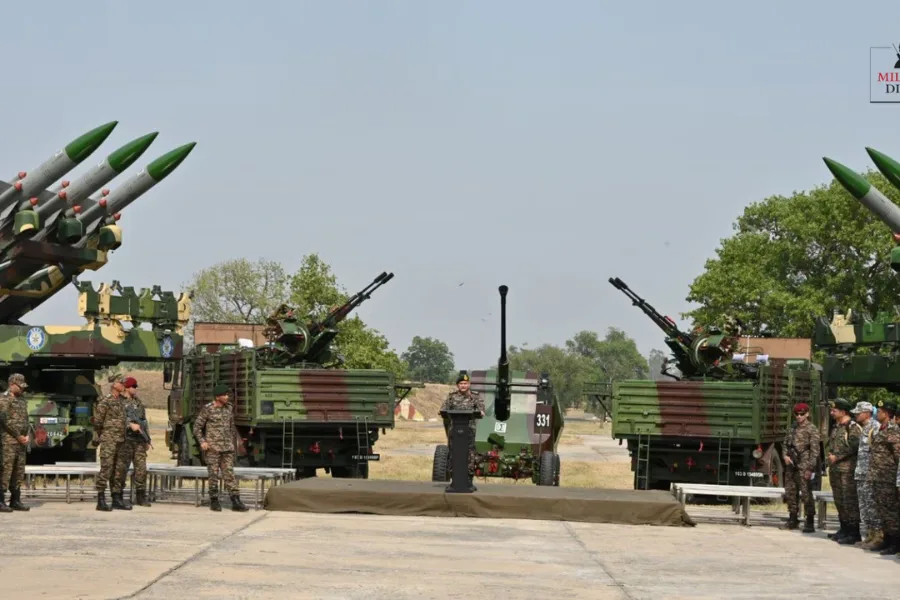
In a landmark counter-terrorism effort recently, Indian security personnel successfully eliminated three Pakistani terrorists. They were named as Suleiman, Hamza Afghani and Jibram, who were involved in the horrific killing of 26 civilians in Pahalgam on April 22. The meticulously planned operation, named Op Mahadev, was staged on the treacherous slopes of Mulnar Peak near the Lidwas Meadow of Mahadev Peak. It is located in the Dachigam forests, just outside of Srinagar.
This tactical success was made possible by a combination of ongoing ground reporting, strategic surveillance, and a key digital footprint. Two satellite phone signals that were detected 17 days apart.
The Digital Path That Triggered the Operation
The watershed moment in this prolonged operation occurred when security forces detected one satellite phone signal. This originated from the Mahadev Peak area, on a Saturday. The second such interception since July 11. The satellite phone was part of the terrorists’ clandestine communication operators. This were designed to avoid standard network detection, however it ultimately became their fatal flaw.
According to security officials, these devices communicate with mobile devices, using radio frequencies and engage with operators over the border, outside of the Indian telecom networks. While very difficult to monitor, Indian intelligence possessed the technology to detect these types of signals and pinpoint their location.
Operation Mahadev: Per patrols, UAVs, and accurate implementation
Once the signal was located at Mahadev Peak (a secluded location approximately 30 km from the nearest inhabited locality) teams from the Indian Army and Jammu and Kashmir Police acted. The area was characterized by dense tree cover and rugged hills dotted with rocky terrain and caves. It had been monitored prior due to increasing electronic activities in the past few weeks as well.
What mattered in this situation was the local knowledge provided by nomadic groups. They were informed by the nomads and very quickly surrounded the suspected hideout. At about 11:30 AM on Monday, the terrorists unaware that they were being tracked were lounging beneath a temporary tent. When they were caught off guard. A fierce gunfight erupted. This ultimately resulted in the demise of all three terrorists.
A three-month odyssey over rugged terrain
The operation marked the end of a prolonged and searched for three months. Following the massacre in Baisaran (Pahalgam) that happened on April 22, the Army’s Special Forces and Rashtriya Rifles executed random search operations across various ridgelines from Pahalgam to Dachigam. It was for three hours with satellite images, infeasible by terrain.
The Army, with their manoeuvrability and portability of UAVs, was able to detect signals anytime or location. They detected any radio intercepts or satellite signals, and were easily deployable to the designated location. They rendered the terrorists unable to remain in one location for long period of time, forcing continual movement.
Their behavior was consistent: short, coded messages followed by quick disappearing acts back into the woods. The security infrastructure integrated these incidents with live video monitoring and coordinating ground deployments. Often under really horrible weather and circumstances.
Confirming the Kill: No Room for Doubt
Given the seriousness of the April 22 attack, officials were prudent in confirming the identities of the deceased terrorists. Four primary witnesses, two locals who were previously arrested for shielding the terrorists. Also, relatives of the Pahalgam victims, were produced for facial identification.
Home Minister Amit Shah framed in the Lok Sabha that the three people were responsible for the April murder, too. There was cartridge forensic and ballistic examination that clearly proved that their weapons were used on this assault.
A win in the anti-terror strategy
Operation Mahadev is a success and shows that India has moved ahead with its counter terrorism strategy, marrying ground truth “intelligence”, human experience, live coverage, and electronic intercepts to go after high value targets.
“To be honest, their sophisticated communication device ultimately gave them away.” according to the senior officer who operated in the field. This important case adds to recent news updates on how technology, partnerships with communities, and military precision may come together to deliver justice.
While the country honors the innocent lives taken in Pahalgam, Operation Mahadev exemplifies the commitment and strength of the Indian security forces.






